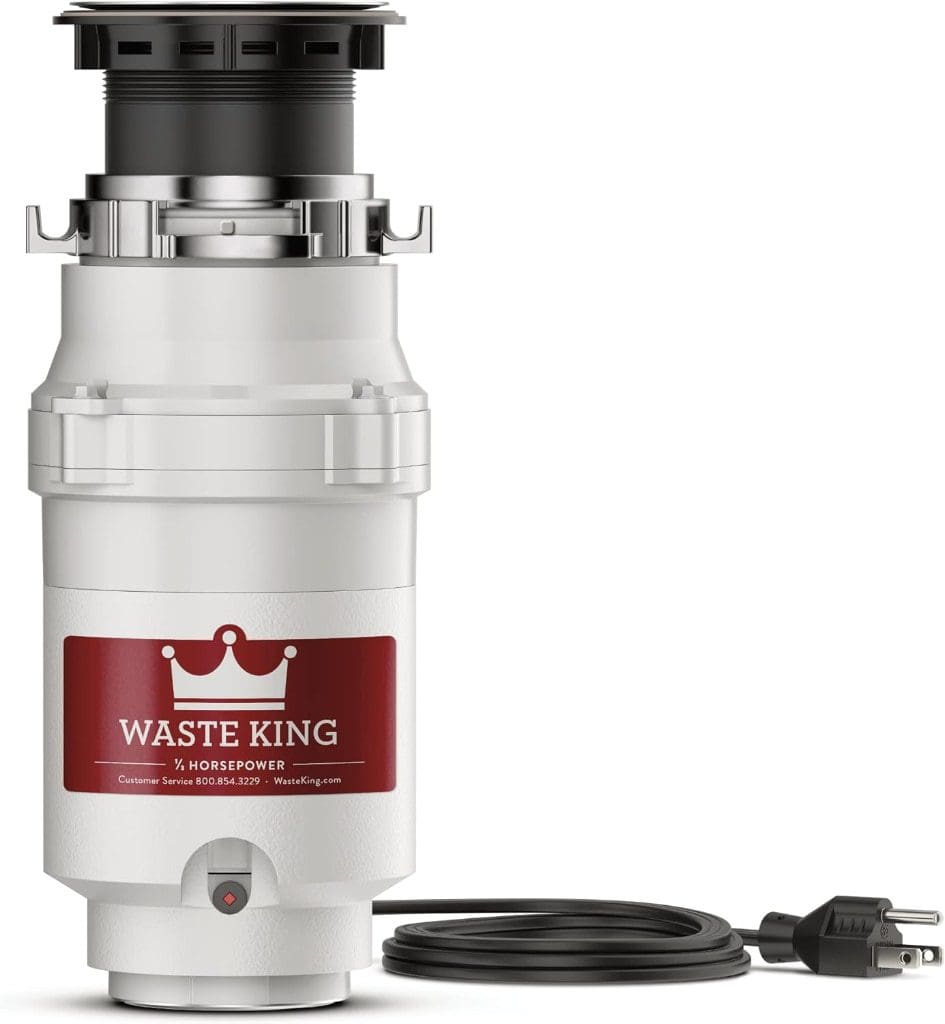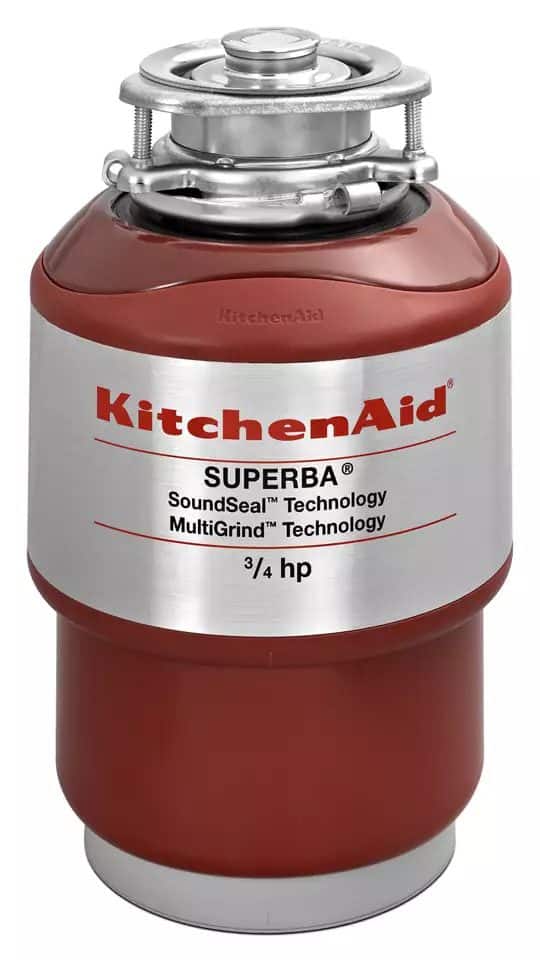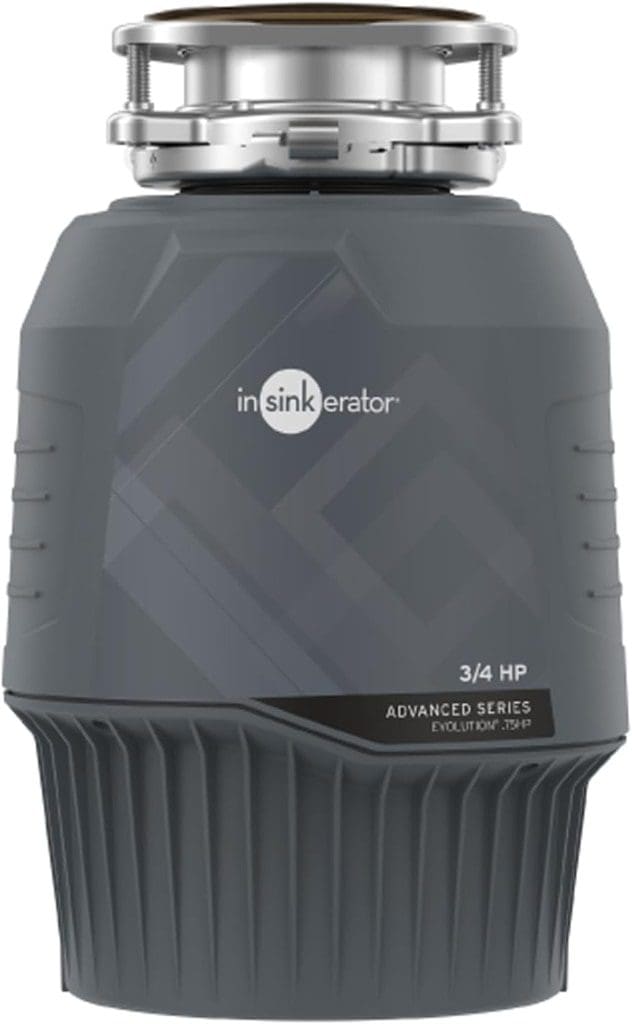
Choosing the Best Garbage Disposal: A Complete Buying Guide
Looking to choose the best garbage disposal for your kitchen? Our complete buying guide will help you make an informed decision to keep your home clean and fresh.
Introduction
When it comes to the functionality and efficiency of your kitchen, choosing the right size garbage disposal is paramount. The perfect fit can streamline your cooking and cleaning routines while ensuring smooth plumbing operations. In this guide, we’ll delve into the intricacies of selecting the ideal garbage disposal for your kitchen needs.
Main Types of Garbage Disposals
Garbage disposals are essential kitchen appliances designed to shred food waste into tiny particles, allowing it to flow through plumbing without causing clogs. Operating on a motorized mechanism, they offer convenience and hygiene benefits by eliminating the need for manual disposal.
Garbage disposals come in various types and models to suit the needs of different households. One important factor to consider when choosing a garbage disposal is the disposal motor size. The motor size determines how efficiently the disposer can break down food waste. Another thing to keep in mind is the garbage disposal installation process.
If you plan to hardwire your disposal, make sure to choose a model that can accommodate this setup. Some garbage disposals come without a cord, so you may need to transfer the cord from the old disposal. Once your garbage disposal is set up and ready to go, you can simply run the disposal by flipping the switch. Remember to always keep the stopper in place when the disposal is running to avoid any accidents.
Garbage disposal motors come in varying sizes, and the motor size plays a crucial role in how long your garbage disposal lasts. It’s essential to choose a motor size that can efficiently break down food waste without straining the motor. Additionally, understanding the different garbage disposal parts can help you troubleshoot any issues that may arise.
When it comes to choosing a garbage disposal, it’s important to consider the size of your household and the amount of food waste generated. A larger household may require a more robust disposal to handle the increased workload. Overall, a garbage disposal helps reduce food waste in landfills and keeps your kitchen smelling fresh.
Factors to Consider

- Kitchen Size and Layout: Assess the available space under your sink and consider the layout for optimal installation.
- Family Size and Usage Frequency: Determine the volume of food waste generated daily to match with the disposal capacity.
- Power and Motor Strength: Choose a disposal with adequate horsepower to handle your usage demands effectively.
- Noise Level: Opt for models with noise-reduction features for a quieter kitchen environment.
- Durability and Maintenance: Prioritize units with durable components and easy-to-maintain designs for longevity.
Sizing Options
Garbage disposals come in various sizes to accommodate different kitchen setups and usage requirements:
- Compact Disposals: Ideal for small kitchens or occasional use, these units offer space-saving benefits without compromising functionality.
- Standard Disposals: Suitable for average-sized households, standard disposals strike a balance between power and space efficiency.
- High-Capacity Disposals: Designed for large families or heavy usage, these units boast robust motors and spacious grinding chambers.
Kitchen Compatibility
Ensure compatibility with your kitchen’s infrastructure:
- Under-Sink Space: Measure the available space under your sink to ensure proper fitment.
- Plumbing Compatibility: Check the plumbing layout to verify compatibility with the disposal’s connection points.
- Electrical Requirements: Confirm the availability of electrical outlets and voltage compatibility for installation.
Environmental Impact
Consider the environmental implications of your disposal choice:
- Energy Efficiency: Opt for energy-efficient models to reduce electricity consumption.
- Waste Management: Choose disposals that facilitate proper waste disposal and recycling practices.
Budget Considerations
Balance initial costs with long-term savings:
- Initial Cost: Evaluate upfront expenses and compare them with projected savings over time.
- Long-Term Savings: Factor in potential savings on plumbing repairs and waste management costs.
Garbage Disposal Features

When looking to buy a garbage disposal, one of the key features to consider is the hp or horsepower of the motor size. A higher horsepower means the disposal can handle tougher types of garbage and will last longer. There are two main types of garbage disposals: continuous feed and batch feed. A continuous feed disposal operates by turning on a switch and allowing food to be continuously fed into the kitchen sink. On the other hand, a batch feed disposal requires a stopper to be inserted before it can be turned on. This feature can help prevent accidental jamming of the disposal unit. Some disposals grind food particles finely enough that they can be safely disposed of in a septic tank. Additionally, features like auto-reverse can help clear out any blockages in the system.
When using a garbage disposal, it is important to run the water while you use the disposal to help flush out any remaining food particles. Regularly cleaning the disposal can also help prevent build-up and maintain its performance. If you are unsure about which type of disposal to choose, you can refer to a garbage disposal buying guide or seek advice from a home improvement store like Home Depot. Ultimately, the right garbage disposal for your needs will depend on factors like the size of your household and the amount of food waste you generate regularly.
What Kind of Garbage Disposal Is Best?
When choosing a garbage disposal, there are several factors to consider to determine the best option for your needs. One key consideration is the motor size, measured in horsepower (hp). A 1 hp garbage disposal is generally more powerful and efficient, making it a popular choice for many households. Another decision to make is whether to go with a continuous-feed garbage disposal or a batch-feed garbage disposal. A continuous feed model allows you to feed the garbage disposal while it is running, making it more convenient for quick clean-up tasks. On the other hand, a batch-feed garbage disposal may be a safer option if you have small children in the house.
In terms of durability and performance, a stainless steel garbage disposal is often considered the best option. Stainless steel is resistant to corrosion and can last longer than other materials. Additionally, regular maintenance with a disposal cleaner can help prolong the life of your new garbage disposal. With proper care, a high-horsepower garbage disposal can last for many years, providing reliable waste management in your kitchen.
Decide between DIY installation or professional assistance:
- DIY vs. Professional Installation: Assess your skill level and time availability before deciding on the installation approach.
- Maintenance Tips for Longevity: Follow manufacturer-recommended maintenance practices to prolong the lifespan of your disposal.
Customer Reviews and Recommendations
Gather insights from existing users:
- Importance of Research: Read customer reviews and seek recommendations from trusted sources to inform your decision.
- Learning from Others’ Experiences: Benefit from others’ experiences to avoid common pitfalls and make an informed choice.
Common Misconceptions

Dispelling myths and misconceptions about garbage disposals:
- “Garbage disposals are only for disposing of food scraps.”
- While food waste disposal is their primary function, modern garbage disposals can handle many biodegradable items, including fruit peels, vegetable scraps, and even small bones.
- “Using a garbage disposal is bad for the environment.”
- Contrary to this belief, utilizing garbage disposals can reduce the amount of food waste sent to landfills, which contributes to methane gas emissions. Properly treated food waste can be converted into renewable energy through composting or anaerobic digestion.
- “Garbage disposals are noisy and disruptive.”
- While older models may have been notorious for their noise levels, advancements in technology have led to quieter operation in modern disposals. Look for units with sound insulation or advanced grinding mechanisms for a more peaceful kitchen experience.
- “You can dispose of anything down the garbage disposal.”
- While garbage disposals are robust, they are not invincible. Avoid putting non-food items, such as plastic, metal, or glass, down the disposal, as they can damage the blades and motor. Additionally, fibrous foods like celery or potato peels should be avoided to prevent clogs.
- “Garbage disposals require frequent repairs and maintenance.”
- With proper use and regular maintenance, garbage disposals can provide years of trouble-free service. Simple practices such as running cold water while operating the disposal and periodic cleaning can help prevent clogs and extend the unit’s lifespan.
FAQs
- Q: Can I install a garbage disposal myself, or should I hire a professional?
- A: While some homeowners with plumbing experience may feel confident in DIY installation, it’s generally recommended to enlist the help of a qualified professional to ensure proper installation and avoid potential plumbing issues.
- Q: Are there any foods I should avoid putting down a garbage disposal?
- A: Yes, fibrous or stringy foods like celery, potato peels, and corn husks can wrap around the disposal blades and cause clogs. Additionally, avoid disposing of grease, oil, or large bones, as they can contribute to blockages and odors.
- Q: How can I keep my garbage disposal smelling fresh?
- A: To combat odors, periodically grind citrus peels or ice cubes in the disposal to freshen it up. You can also run a mixture of baking soda and vinegar through the disposal followed by hot water to eliminate any lingering odors.
- Q: Will using a garbage disposal increase my water bill?
- A: While using a garbage disposal does require water to flush away food waste, the amount is typically minimal compared to other household activities. Using cold water while operating the disposal can help conserve energy and reduce water usage.
- Q: Can I use a garbage disposal with a septic system?
- A: Yes, many garbage disposals are designed to be compatible with septic systems. However, it’s essential to choose a model specifically labeled as septic-safe and to follow proper usage guidelines to avoid overloading the system.
Conclusion
In conclusion, selecting the right size garbage disposal for your kitchen involves considering various factors such as kitchen size, usage frequency, environmental impact, and budget considerations. By understanding your needs and researching different options, you can make an informed decision that enhances both your kitchen functionality and environmental sustainability.
Remember, when in doubt, consult with a professional to ensure proper installation and maintenance of your garbage disposal.







